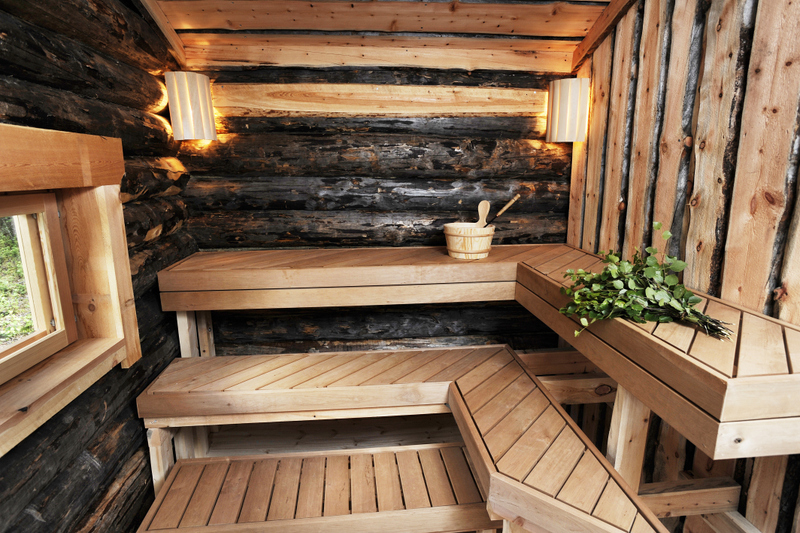What Does Traditional Sauna Mean?
What Does Traditional Sauna Mean?
Blog Article
The Definitive Guide to Traditional Sauna
Table of ContentsAbout Traditional SaunaThe smart Trick of Traditional Sauna That Nobody is Talking AboutThe Traditional Sauna PDFsIndicators on Traditional Sauna You Should KnowSome Known Details About Traditional Sauna
The majority of the weight lost in a sauna is water loss and is re-gained upon rehydrating. However, without an uncertainty sauna can be a vital part of a healthy weight-loss program. To take a look at the differences between conventional and IR saunas, I will separate these into verifiable, academic, and made differences.Thus, the hottest point in the saunawhich is at the ceiling straight over the sauna heateris typically between 185 and 190 F. Claims that a conventional sauna exceeds 200 F is just not real and not suitable for electrical saunas offered in the United States. The temperature level for a far-infrared sauna is typically set in between 120 and 140 F; nevertheless, unlike the conventional sauna, the objective in and IR area is not to achieve a heat.
As a result of this, the temperature difference is almost unimportant, because profuse sweating causes both sauna kinds, however the technique of heating the body is various. In an IR sauna the bather will certainly really feel warm and will certainly sweat profusely, but at a lot lower temperatures. Traditional Sauna. Hence, if the objective is to spend longer time periods in the sauna, the IR sauna is a good choice

The Only Guide for Traditional Sauna

When the high temperature is attained, the components cycle on and off to preserve the heat. Traditional Sauna. Most conventional sauna individuals appreciate putting water over the rocks to produce vapor to elevate sauna moisture degrees. The advantages of putting water over the rocks consist of: making the area more comfortable, moistening the nasal passages, and allowing the use of aromatherapy by mixing vital oils with the water
In a far-infrared sauna, the heat waves penetrate the body to properly warm the body and elevate the body core temperature level. To attain this increased temperature, Far-infrared emitters create infrared energy which is close to the same wavelength as that which the body naturally emitsoften described as the "Crucial Variety" of 7 to 14 microns), so the energy is well received by the body.
When the energy enters the body, it causes the body temperature to increase and eventually leads to perspiration. In an infrared sauna it's essential for the emitters/heaters to remain on practically constantly. Given that there is no mass of rocks to retain warm, the sauna will cool if the emitters turned off.
All About Traditional Sauna
As discussed over, the sauna bather in an infrared area intends to place himself in front of running emitters to obtain maximum take advantage of the warm. The home heating time for the 2 a knockout post rooms can be really different, relying on exactly how the rooms are utilized. For a conventional sauna, a bather ought to permit 30-40 minutes for the area to achieve a wanted temperature level and to appropriately pre-heat the rocks.
A well constructed sauna will commonly achieve a temperature of 150-160 F in about 30-40 minutes. For hotter temperatures, the area might need to warm for a longer duration.

Traditional saunas tend to be larger (hence make use of even more electricity) than infrared saunas, although traditional saunas are certainly available in one and 2 individual dimensions also. For a two-person traditional sauna, 5x6 or 5x7 size is most preferred. The top bench can conveniently seat two or 3 people and is likewise enough time to relax throughout the sauna session.
Some Known Details About Traditional Sauna
The ordinary cost per kWH of power in the U.S. is around $0.11 - Traditional Sauna, so great post to read a 4.5 kW heating unit will certainly cost around $.50 to run for one hour, if the heating unit runs constantly for one hour. Usually a sauna heating system will compete 75% of the first hour and 50% of succeeding hours on since the components cycle once the set temperature is attained
A two individual far-infrared room is normally literally smaller than a standard sauna, often about 4' x 4' or smaller sized. The IR furnace is commonly 1.5-1.7 kW utilizing a 120 volt 15 amp plug-in solution. Since the room can be used faster than a sauna area, we will presume the space is made use of for to of an hour including warm up time.
There is a rarely gone over difference in the social experience between the two spaces. While our culture has actually lost a few of the social benefit of the standard sauna experience, my company it can be extremely socially fulfilling. From family time in the sauna, to heart-felt conversations with considerable others, to sauna partiesthe standard sauna experience can bring about intimate mingling.
The Only Guide for Traditional Sauna
Many greater end infrared spaces include tinted light therapy, audio systems and full-glass fronts.
Report this page